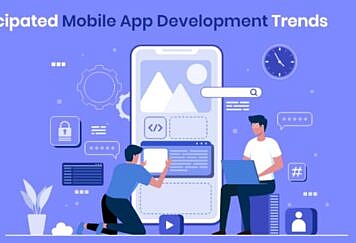The AI Platform Prediction comes with the facility where users can host their machine learning models. Using the platform prediction, developers can get input data for their ML models. As a result, the machine learning model becomes more robust and efficient. The platform prediction also helps you to identify the essential considerations for your projects.
The Definition of AI Platform Prediction
AT Platform Prediction is an Artificial Intelligence (AI) platform that can host your computing resources on cloud storage to run your AI models. Users can request predictions from the platform and obtain target values in exchange for their requests.
So, how does the process work? It is also essential to know the steps to set up a prediction model on the cloud.
- The users have to export their models as artifacts. Hosting the artifacts on the AI Platform Prediction is not a time-consuming and complicated matter.
- The next step is creating a model resource. After creating the model resource, users have to make a model version from the saved models on the cloud.
- The AI platform metrics allow users to format their input data for prediction. You can format both batch and online predictions.
- In the case of online prediction, the service runs the saved model on the cloud. On the other hand, batch prediction follows a TensorFlow model.
Know the Batch Prediction Model in Detail
While the online prediction model on the AI Platform Prediction works simply, the batch prediction model may appear a little complicated to new users. Therefore, a detailed discussion on the batch prediction will help you understand the concept easily.
As stated above, batch prediction supports a TensorFlow model. Find out how the TensorFlow model gets involved in the following section.
- The batch prediction for the AI platform works through allocating the resources for running your machine learning (ML) model.
- Your input data gets distributed across the allocated nodes of the prediction service. Therefore, the service creates a TensorFlow graph for each allocated node.
- Each node collects data as it runs the graph. The collected data will get stored in the specific cloud location as per your recommendation.
- The service shuts down after processing all input data. Nevertheless, it releases the resources allocated for each node after completing the job.
AI Platform Prediction and Model Deployment
Those, who are well-accustomed to the AI platform working process, must have come across the term “model deployment.” So, what is model deployment, and how does it works? For obtaining predictions from the Platform Prediction, the users need to host their models on the cloud. The step for hosting the models on the cloud is known as “Deployment.”
The prediction service deals with the infrastructure required for running your ML model. The service allocates the resources through batch and online prediction requests. The overall process of resource allocation for obtaining the predictions is known as the “Model Deployment.”
Differences between Models and Versions
For using the AI prediction platform service, users should know the difference between models and versions. Experts define a Model as a machine learning solution. On the other hand, the ML model consists of many versions.
An AI platform prediction service assumes that users will create multiple versions of a machine learning model. So, a model acts like a container that consists of several versions of the ML model. The best part is that numerous AI Platform Prediction services offer a custom prediction routine. Users can customize the prediction routine through additional codes and training artifacts for dealing with prediction requests.
The Version Variations
For crafting AI prediction algorithms, developers must know about the variations of the versions. For any model resource, you can create an arbitrary number of versions. Then, using the same model resources, you can run different versions. Every version is unique, and the differences between two or multiple versions are known as variations.
Since inputs are different for every version, the outputs can also be different. The service for prediction of AI platform offers a facility to switch from one version to another. With existing resources and data, you can test different variations of the versions. Running tests for every version variation helps the developers to create a more accurate ML model.
Automatic and Manual Scaling
Automatic scaling through AIU Platform Prediction helps the developers to obtain predictions for their ML models at a minimal cost. However, automatic scaling has a downside too. The service may provide a slow output when there are significant spikes of request traffic.
In most cases, when traffic spikes are steep, users can consider manual scaling to avoid time waste. However, some ML applications demand low latency, and thus manual scaling is suitable for such applications.
Conclusion
Developers commonly use the AI Platform Prediction service to host and test their machine learning models. Model testing is a conventional step before implementing a machine-learning algorithm to an application or software. The test helps the application to become robust to deal with problems in real-world situations.
Follow TechStrange for more Technology, Business, and Digital Marketing News.





